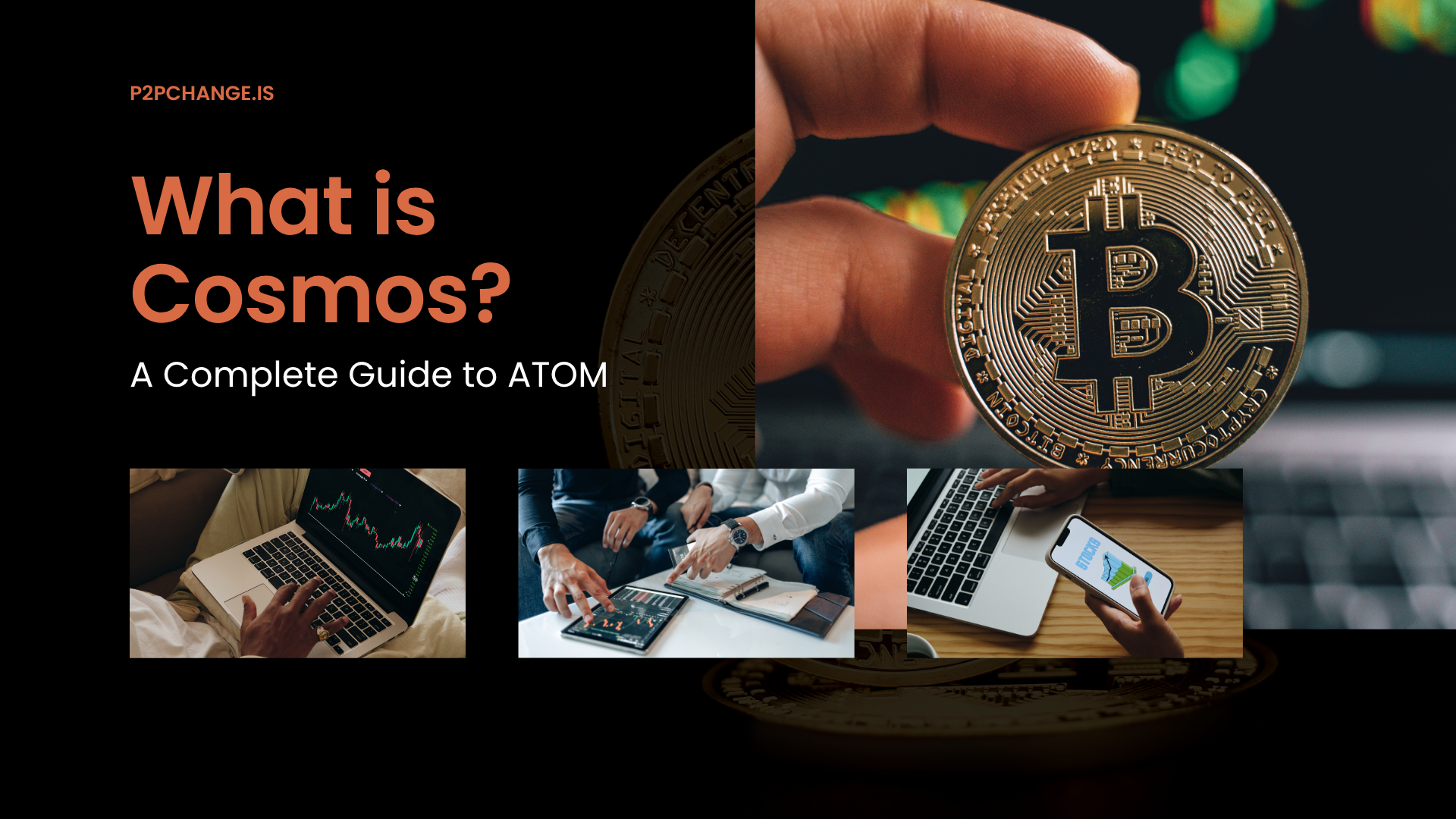
In the evolving landscape of decentralized technologies, Cosmos has emerged as a pioneering project that seeks to build an “Internet of Blockchains.” Central to this vision is ATOM, the native token of the Cosmos Hub, which incentivizes network security, on-chain governance, and cross-chain interoperability. This guide explores Cosmos in detail, covering its technology, ecosystem, token mechanics, investment insights, and practical use of ATOM.
The Cosmos Vision
Cosmos is a modular network of independent blockchains—called zones—that connect via a central hub, enabling data and token transfers across chains. Each zone maintains its own governance, tokens, and validators while benefiting from the Cosmos Hub’s shared interoperability.
This hub-and-zone model facilitates a decentralised and scalable Cosmos blockchain ecosystem, addressing crucial issues such as blockchain interoperability and scalability barriers.
Core Technology: Tendermint, Cosmos SDK, and IBC
Tendermint BFT
At the foundation of Cosmos lies Tendermint Core—a Byzantine Fault Tolerant (BFT) consensus engine that integrates networking and consensus layers, enabling high throughput with low latency through a Proof‑of‑Stake (PoS) mechanism.
Cosmos SDK
The Cosmos SDK is a modular framework that allows developers to build sovereign blockchains on Tendermint with pre‑built modules (staking, governance, tokens) and optional custom plugins.
Inter‑Blockchain Communication (IBC)
IBC is the protocol that connects zones to the Cosmos Hub (and thus to one another), enabling secure transfer of tokens and data across disparate chains.
The Role and Value of ATOM
Security and Staking
ATOM is the staking token that underpins network security. Token holders delegate ATOM to validators, who confirm transactions and secure the network using PoS. Both validators and delegators receive staking rewards, distributed in ATOM, helping incentivize participation.
Governance and Voting
ATOM holders vote on governance proposals regarding software upgrades, network fees, or treasury allocations—decisions weighted according to ATOM staked.
Ecosystem Infrastructure
As the central token of the Cosmos Hub, ATOM funds interchain public goods via treasury mechanisms and the Interchain Allocator—supporting ecosystem growth and enhancing token value.
Tokenomics
ATOM employs a flexible inflation model that adjusts yearly supply between approximately 7% and 20%, aligning issuance with staking participation and network security needs.
The Expanding Cosmos Ecosystem
The Cosmos ecosystem is robust, supporting a range of specialised zones:
- Osmosis (OSMO): A leading automated market maker (AMM) for IBC assets, with billions in TVL across nearly 45 zones.
- Axelar (AXL): Facilitates cross‑chain message passing, including non‑IBC assets like USDC.
- Juno (JUNO): A community‑governed WASM‑based smart-contract chain with hundreds of dApps.
- Evmos (EVMOS): An EVM-compatible chain leveraging IBC connectivity and Ethereum interoperability.
These chains highlight Cosmos’s modularity and its collective mission to build the Internet of Blockchains.
Investment Insights and Price Outlook
Historical Performance
Since its launch in 2019, ATOM has fluctuated between $1.66 and an all-time high of around $44 in September 2021. As of mid‑2025, ATOM is trading near $4–5, with technical support forming around $4.
Future Projections
Analysts offer long-term forecasts ranging from moderate ($5–$7.50 in 2025) to more optimistic bullish projections ($12–$18) if ecosystem adoption accelerates.
Investment Considerations
- Utility and Growth: ATOM’s value proposition derives from staking yield, governance influence, and its function as a reserve token for IBC hubs.
- Ecosystem Expansion: Successful interchain integrations, such as Injective and Jackal, highlight the growing interoperability and potential valuation catalysts.
- Risks: Competitive pressure from other interoperability networks, token inflation, and broader market cycles are critical variables.
How to Acquire and Stake ATOM
Acquisition
ATOM is tradable on major exchanges (e.g., Binance, Coinbase, Kraken) and can be acquired via fiat or crypto pairs.
Wallets and Staking
To stake ATOM, users deploy non-custodial wallets such as Keplr, which connects to the Cosmos Hub and enables delegation to validators. Delegation requires transaction fees and a network-prescribed minimum balance for staking.
Advantages, Challenges, and Conclusion
Advantages
- Interoperability: Enables seamless token and data transfers across independent chains.
- Developer-Friendly: Toolkit (SDK + Tendermint) reduces time-to-market for new chains.
- Active Ecosystem: A growing number of chains (Osmosis, Juno, Evmos) increases utility and visibility.
Challenges
- Token Value Capture: Some community voices question whether ATOM captures sufficient economic value relative to ecosystem growth.
- Inflationary Pressure: High supply growth could pressure price performance if adoption does not keep pace.
- Competition: Other interoperability solutions, such as Polkadot or LayerZero, challenge Cosmos’s market presence.
Conclusion
Cosmos represents a leading modular blockchain ecosystem designed to enhance scalability, sovereignty, and interoperability through its patent Tendermint consensus, SDK framework, and IBC protocol. ATOM operates as the linchpin of security, governance, and the interchain economic model. For investors and developers seeking exposure to the interchain future, Cosmos offers a compelling foundation—provided they carefully account for inflation, ecosystem competition, and integration momentum.